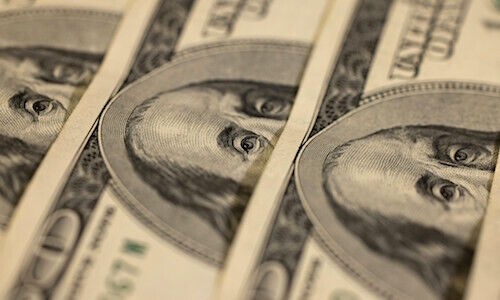LGT believes that the US dollar will remain the primary reserve currency, underpinned by the depth and sophistication of America's financial markets and the greenback's role in global trade.
The predictions of de-dollarization have proliferated since the 1970s but the demise of the greenback as the primary reserve currency remains a perception rather than a «tangible reality», said Sebastian Petric, LGT’s senior investment strategist/fixed income and FX, in a note.
Geopolitical tensions can influence views and erode some aspects of the dollar’s reign. And there is a perception of waning Western economic dominance. But this does not fully translate into reality.
Depth and Sophistication
Petric said he believes the depth and sophistication of US financial markets, coupled with the dollar's role in the global trade will continue to underpin its strength.
The dollar's role as the global reserve currency reflects the emergence of the US as the world’s biggest and strongest economy after World War II. The 1944 Bretton Woods agreement created a collective international currency exchange regime that pegged the dollar to gold, as well as most other currencies to the dollar.
International Confidence
The sheer size of the US economy, free capital flows and robust banking system has earned the international confidence required to retain such status.
But the Bretton Woods system has since collapsed along with fluctuations in the dollar’s exchange rate and the rise of other economic powers. Even then, the dollar’s share of global reserves today remains relatively unchanged and has never fallen below 50 percent, according to IMF data. More than 60 percent of global trade transactions today are still denominated in dollars.
No Real Alternative
Petric is of the view that no other currency offers a real alternative, though there’s plenty of competition such as the euro and currencies from emerging countries that will over time become integrated with global capital markets.
The euro, for instance, offers great potential to be the next major international currency. It appears to fulfil many of the requirements needed to qualify as a reserve currency including free convertibility and pegging by other currencies. The EU’s economy is also only slightly smaller than the US economy, with a relatively sound macroeconomic policy record.
Dollar's Strength To Outweight Weakness
But Petric believes the dollar’s strength will continue to outweigh its weakness, citing the views of Berkeley economist Barry Eichengreen and Cornell University's Eswar Prasad.
Eichengreen's research suggests that while the changing global economic landscape could pose a significant challenge to dollar dominance, the US offers structural advantages. These include a long-established financial infrastructure and confidence in US economic management, which provide resilience against rapid geopolitical changes.
Prasad, on the other hand, emphasizes the rule of law, efficient financial markets and the innovative nature of the US economy as important pillars of its economic strength.


























